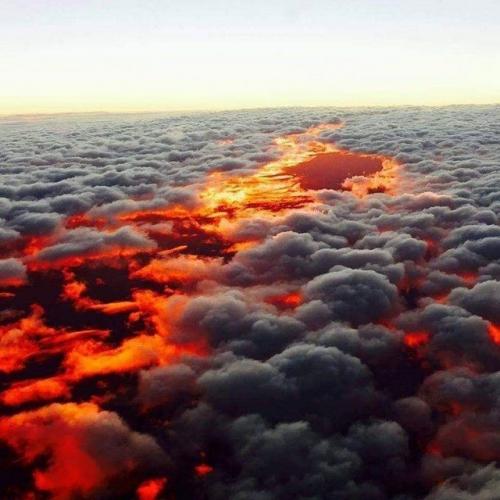The Holocaust of the Amazonian forest and its consequences
Extremely large fires such as that in the Amazon Basin, can rapidly release enormous quantities of carbon dioxide and other gases into the atmosphere, causing a rise in global temperatures and destroying part of the ozone layer.
- Opinión

Extremely large fires such as that in the Amazon Basin, can rapidly release enormous quantities of carbon dioxide and other gases into the atmosphere, causing a rise in global temperatures and destroying part of the ozone layer.
The impact of fires on climate change is complex and hard to predict.
After the fire devastates a zone, the new vegetation that grows there could, over a period from various decades to a century, absorb as much carbon dioxide as was liberated by the fires.
A serious problem is that the interval between fires can be much less than the period of growth of vegetation. In addition, we know that fires will be more frequent and extensive as global temperatures rise, and as a consequence, more carbon dioxide is released into the atmosphere. These fires could complicate the strategy of counting on the forests to help absorb carbon dioxide.
Researchers from the University of Colorado used satellite observations of fires to estimate the emissions of carbon dioxide based on the mass of vegetation burned.
The smoke from forest fires not only harms the health of human beings and animals, but also affects the environment and reaches the upper layers of the atmosphere.
The smoke from these fires is reaching the stratosphere and will remain there for months, with similar effects to those of a volcanic eruption.
The smoke from these great fires does not stay still, but travels great distances, reaching faraway regions as a consequence of global atmospheric dynamics. The smoke from the Amazon fires hits the Andes mountain range and descends towards Argentina, creating a kind of “river of smoke” that darkens the skies for days. The smoke has already covered 3.5 million square kilometres over a great part of South America, the sky of Salta, Santiago del Estero, Santa Fe, Entre Rios, Buenos Aires and is, at the time of writing, over the city of Buenos Aires and the Rio de la Plata.
“The smoke of these fires moves and ends up going around the globe,” explains Santiago Gassó, researcher with the Goddard Space Flight Center (GSFC) of NASA.
Consequences
The columns of smoke from forest fires envelop and alter the clouds, which could affect the climate, according to new research. The new data confirms that it is probable that the clouds, encrusted with smoke, heat the atmosphere around these clouds and they thus dissipate more rapidly.
Ritesh Gautam, of the Indian Institute of Technology Bombay, added that “the smoke aerosols from these fires, that contain many particles of soot, absorb sunlight, and instead of reflecting the sunlight, that is, in place of effecting a net cooling in the climate, on the contrary they heat it up. Smoke causes clouds to darken, which means less sunlight is being reflected back into space. That means more solar energy is being trapped between the clouds and the smoke, warming the air and affecting the local weather,” according to Gautam.
Opinions
“The Amazon forest is being burned through a mixture of ignorance and nefarious interests,” assures Marina Silva, ex Minister of the Environment of Brazil.
The destroyed forest will never return to what it was, according to Jerônimo Sansevero, professor at the Environmental Sciences Department of the Universidad Federal Rural de Rio de Janeiro (UFRRJ) and he affirmed: “We are suffering an irreparable loss. In the last three decades we have never had such a high loss.”
Forest engineer Eraldo Matricardi, professor at the Universidad de Brasilia (UnB), an expert in degradation and forest fires, says that: “The increase of fires in Brazil is the result of the climatic factor and human action, with deforestation to explore areas for planting.”
“We know that the consequences of fires are devastating, they affect the soil, vegetation and the animals in that location, in addition to having effects of global impact”; and Matricardi adds: “The burning emits carbon, the layer of greenhouse gases thickens, and at the same time, it increases the possibility of further aggravating global heating.”
Conclusion
The scenario is very worrying, because we could find ourselves in a succession of fires that would continuously heat the upper atmosphere and feed back into the phenomenon of further injection of the atmosphere with aerosols, hence this tendency will end up having an almost volcanic effect, where it will block the sunlight for many years.
23/08/2019
(Translated for ALAI by Jordan Bishop)
- Prof. Norberto Ovando, President of the Association of Friends of National Parks (AAPN). Expert of the World Commission on Protected Areas (WCPA) and, Communication and Education (CEC), International Union for Conservation of Nature (IUCN).
Del mismo autor
- Nuevo informe del IPCC, "un atlas del sufrimiento humano" 09/03/2022
- Los incendios forestales se vuelven extremos 23/02/2022
- Debemos mantener la salud ecológica de los humedales 02/02/2022
- Informe de Riesgos Globales 2022 25/01/2022
- Suelos saludables para una vida saludable 03/12/2021
- Estamos en una emergencia climática 10/11/2021
- Es momento de tomarse en serio el cambio climático 29/10/2021
- Riesgos de desastres en un mundo interconectado 29/09/2021
- Proteger y restablecer los bosques garantiza la calidad del agua dulce 08/09/2021
- Nueva tecnología para combatir incendios forestales 25/08/2021
Clasificado en
Clasificado en:
Crisis Ambiental
- Paula Bianchi 07/04/2022
- Leonardo Boff 05/04/2022
- Gabriela Ramírez, OBELA 04/04/2022
- Gabriela Ramírez, OBELA 04/04/2022
- Aviva Chomsky 28/03/2022
Amazonía, Cambio Climático
- Leonardo Boff 15/02/2022
- Prabir Purkayastha 14/02/2022
- Prabir Purkayastha 13/02/2022
- Jake Johnson 09/02/2022
- Jomo Kwame Sundaram 26/01/2022








